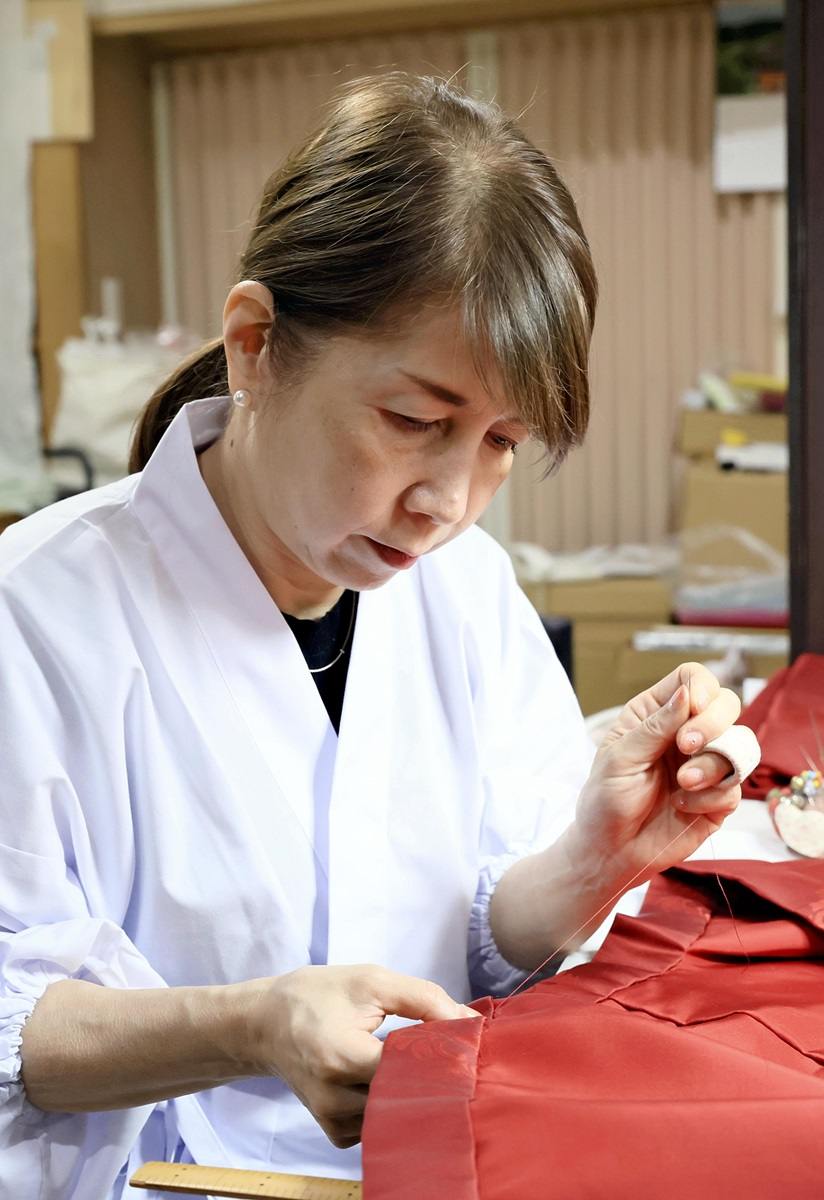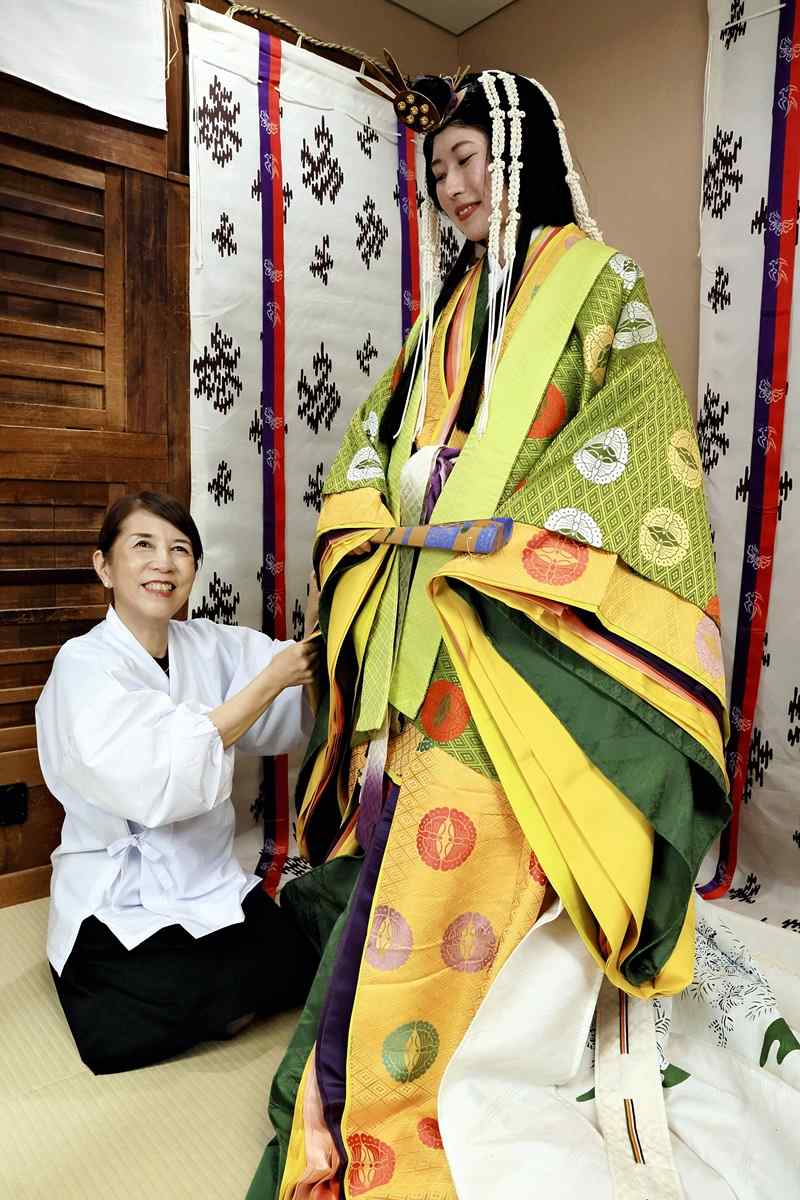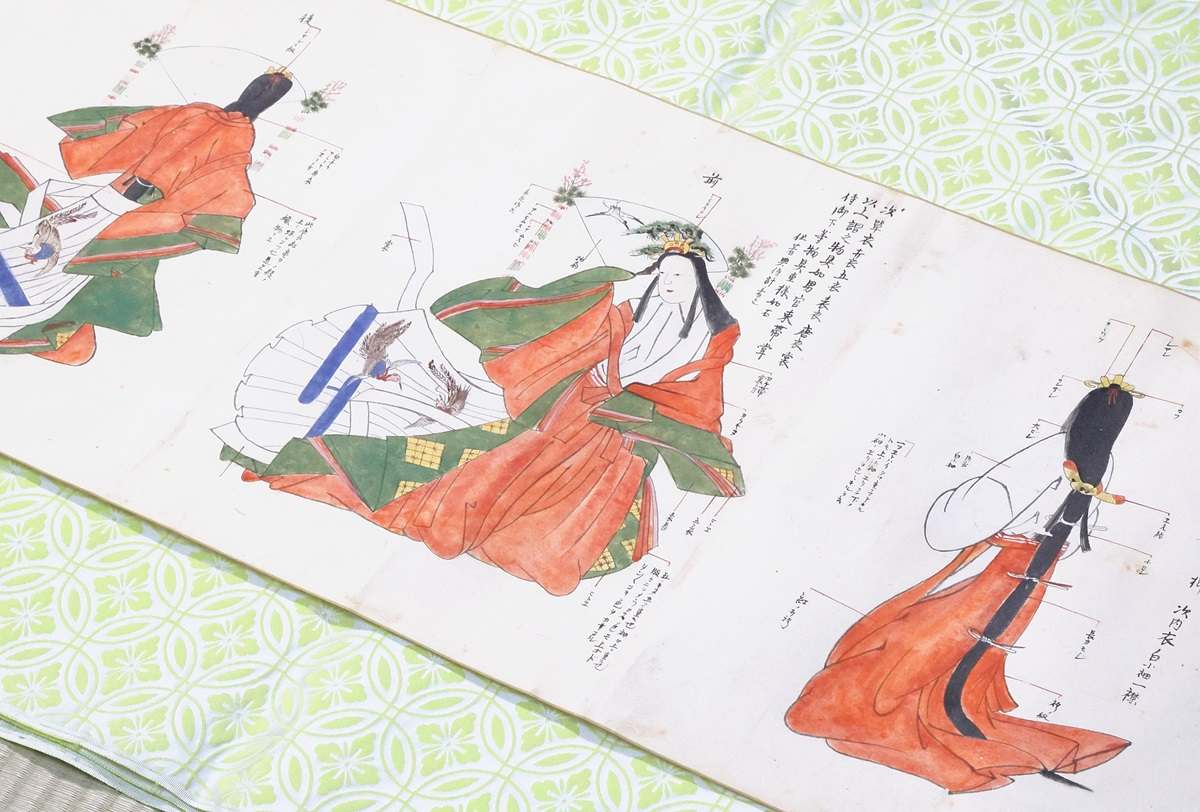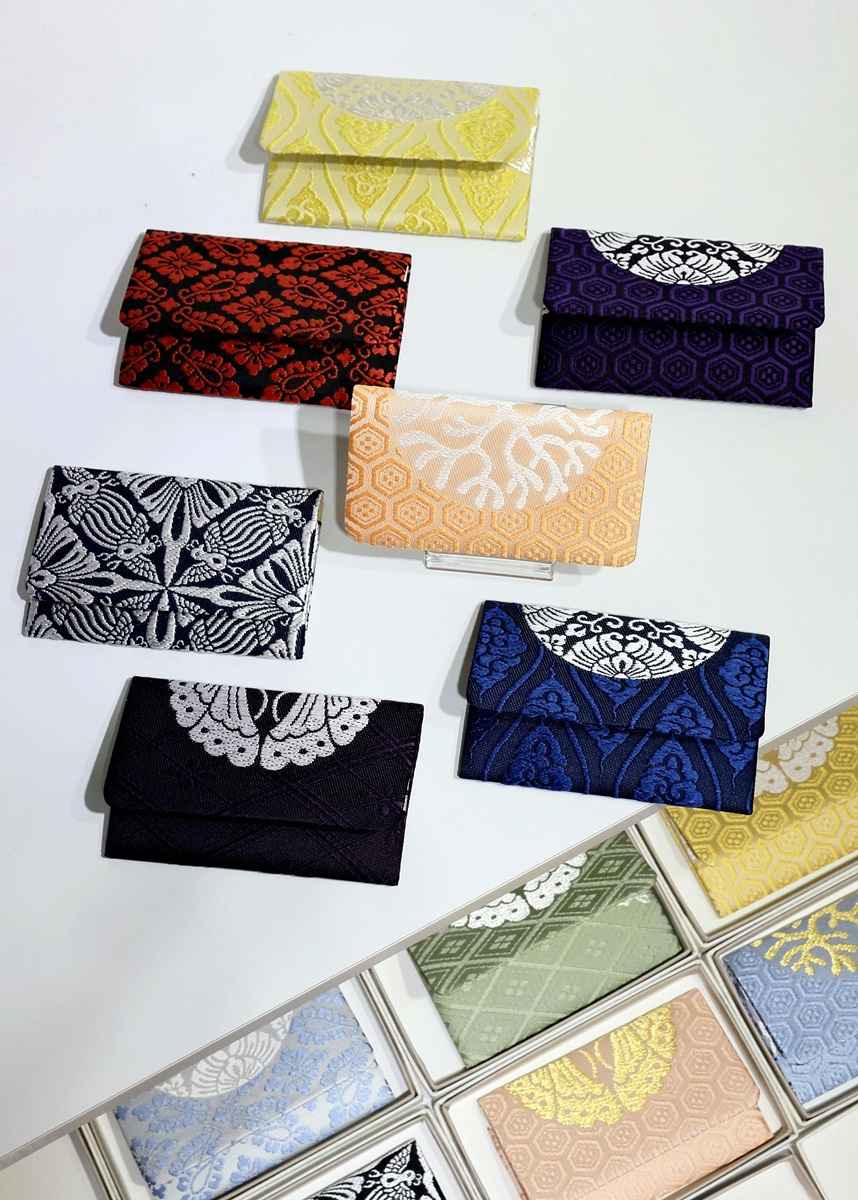
Chikako Kuroda sews clothes using age-old craft methods.
10:18 JST, September 14, 2024
KYOTO — An ancient women’s robe with layers of fabric that express the changing colors of autumn leaves is designed with patterns of butterflies. With their wings spread, the butterflies appear frozen in time.

Traditional dress master Chikako Kuroda expertly dressed a model in each garment of junihitoe, or twelve-layer kimono. The mukaicho, or facing butterfly pattern, a pattern originating in Japan and called Yushoku Monyo (Yusoku Monyo), is said to symbolize prosperity for future generations.
“These patterns embody a prayer for peace and happiness, unlike Western emblems, which often symbolize power and strength,” Kuroda said with a soft smile.

Chikako Kuroda wears a junihitoe robe with a butterfly pattern in the Nakagyo district of Kyoto.
New twist on tradition
About 1,000 years ago, when Murasaki Shikibu wrote The Tale of Genji and Sei Shonagon The Pillow Book, Japan’s unique culture was flourishing. Court clothes such as junihitoe also added a touch of splendor to the then capital city of Kyoto.
Kuroda’s job is to create the finest silk fabrics worn by the nobility of the time, based on ancient precedents, and to dress contemporary people with them. She is also fascinated by the patterns that adorn the kimono.
One such design is miru. Inspired by an unusual theme — sea elk horn, a type of seaweed — it symbolizes eternal life, with its resemblance to evergreen pine trees.
“The refined and timeless patterns make me realize that they are the pinnacle of design,” says Kuroda.
Wanting to share the beauty of Japanese design with the world, Kuroda has breathed new life into the tradition by creating a brand of accessories including business card holders, pencil cases and ties.
Kuroda was originally a banker and came into the world after marrying Yukiya Kuroda, the 19th head of the Kuroda Shozokuten, a traditional clothing store in Kyoto dating back to the early Edo period (1603-1867).

A scroll that is hundreds of years old, handed down in the Kuroda Shozokuten, depicts ancient clothing.
At its shop, located near the Sakaimachi Gomon Gate on the south side of Kyoto Gyoen National Garden, Kuroda Shozokuten produces priestly robes and ritual furnishings for shrines. The shop also collaborates with other clothing stores to produce costumes and molds for Aoi Matsuri and Jidai Matsuri (Festival of the Ages), two of Kyoto’s three major festivals.
The shop used to supply the court nobles living around the Imperial Palace, but now it fulfills orders from universities and museums. Sometimes it supplies them with junijito robes.
When she married into the family, Kuroda was already familiar with needlework, having grown up in a family business that ran a kimono shop. However, it took her more than 20 years to master all the necessary skills to handle traditional clothing, including making clothes with thick needles and cutting high-quality silk, where mistakes are not tolerated.
Expanding the appeal
During his training, Kuroda made a number of new discoveries.
One day, she noticed a bag full of silk rags from robes. The rags were not used for anything, although they had traditional patterns that represented auspicious motifs such as butterflies, cranes and turtles.
“They looked like treasures to me. I wanted to turn them into something I would love to have,” Kuroda said.
When she had some free time, Kuroda started making incense holders and coasters from the leftovers. The number of finished accessories increased and she decided to hold an exhibition. Her work was a great success, the accessories were sold out within a day. In response to the demand, she expanded her range with business card holders and tea ceremony cases.

Business card holders with traditional Japanese patterns
Eventually, word of mouth led to so many orders that she could no longer rely on scraps to make the items. She turned to Nishijin textile artists to create special fabrics with the same patterns, but in pastel colors to make them more accessible.
This marked the birth of a new brand: “Heishichi.” It is a name given to the head of the Kuroda family until three generations ago.
The store began selling online to spread the appeal of the patterns worldwide. It was founded two years ago. Her son, Motooki, who used to work in advertising, came on board to expand the company’s reach to younger generations.
The traditional patterns live on in her accessories. A cross-body drawstring bag features the toridasuki pattern, which was once used in the hakama pants of young nobles. The long-tailed bird depicted on it has been considered auspicious since ancient times, and the toridasuki features the motif of eight of these birds in a circle, which is believed to convey the wish, “May your connections come true.” The geometric design feels like it was created with a contemporary artistic sensibility.
Kuroda is committed to passing on this thousand-year-old prayer culture.
“These Japanese designs have been accepted throughout the centuries. We want to pass them on to the next generation by giving them a new shape,” she said.
***
If you are interested in the original Japanese version of this story, Click here.


